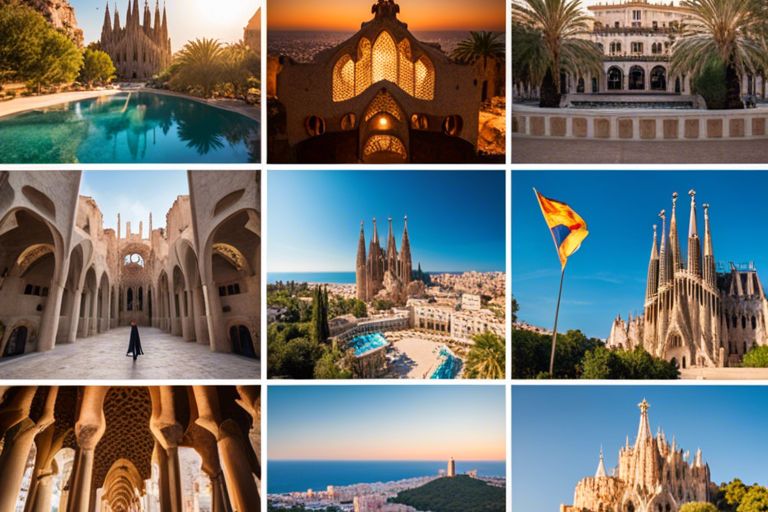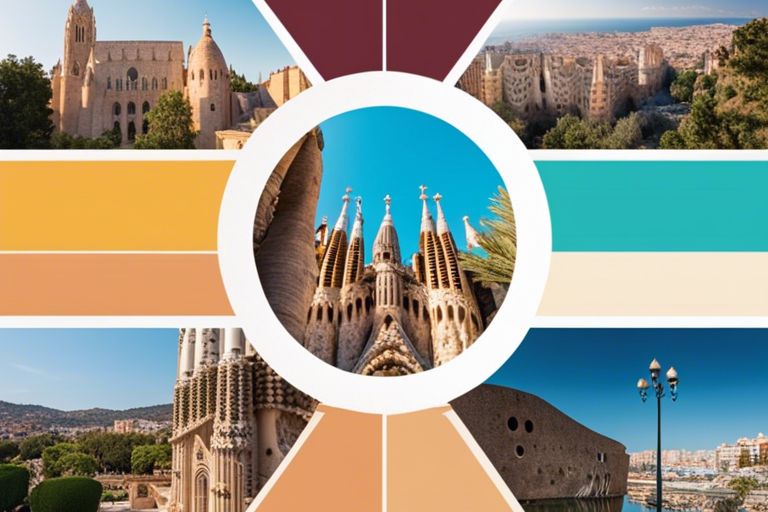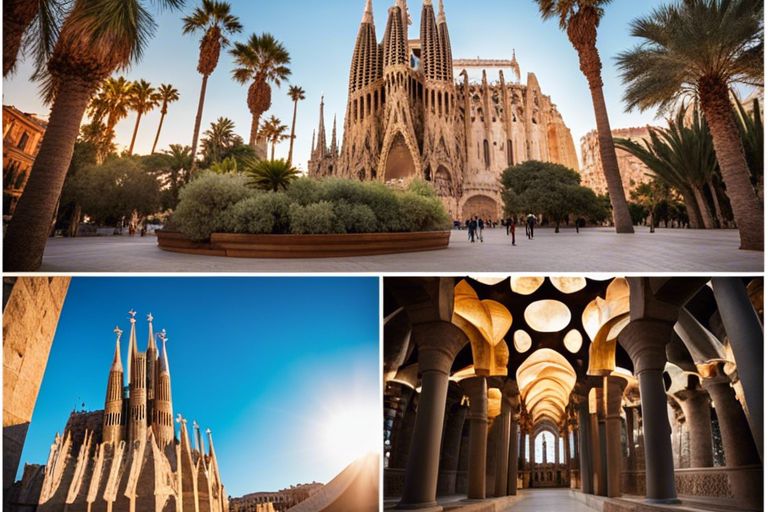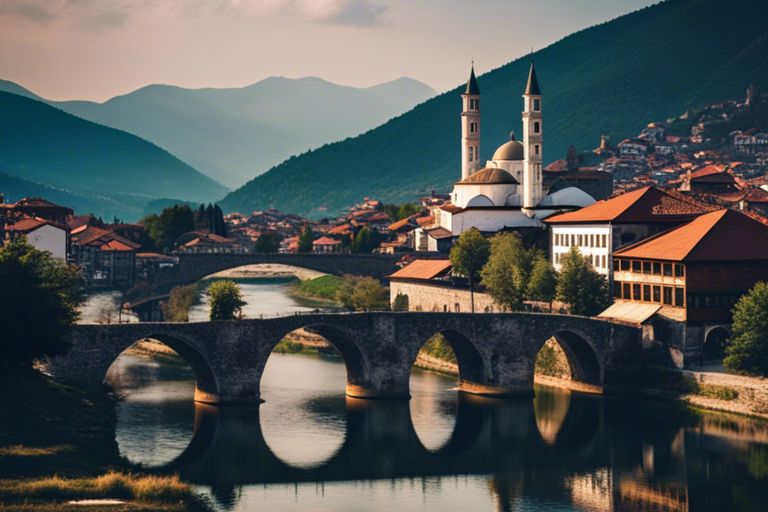I’ve always been drawn to Spain, a country that embodies the essence of passion, creativity, and rich cultural heritage. As I ventured beyond the familiar tourist trails, I discovered a land of diverse landscapes, vibrant cities, and hidden gems waiting to be unearthed. From the majestic mountains of the north to the sun-kissed beaches of the south, Spain is a treasure trove of experiences that will leave you enchanted and yearning for more. Whether you’re a foodie, an art lover, or an adventure-seeker, Spain has something for everyone. So, come and join me on this journey as I uncover the best places to visit in Spain, and let the beauty of this incredible country leave you spellbound.
Key Takeaways:
- Explore beyond Madrid and Barcelona: While these cities are popular destinations, there’s so much more to see and do in Spain, from the mountainous north to the sleepy side of Ibiza and the Moorish past of Andalucía.
- Discover Spain’s diverse cultures and landscapes: From the lunar lava plains of Lanzarote to the lush archipelago of Islas Cíes and the stunning rock formations in the Cabo de Gata-Níjar Nature Reserve, Spain’s landscapes are as diverse as its cultures.
- Visit lesser-known regions and towns: Consider visiting regions like Asturias, La Rioja, and Mallorca, which offer a wealth of cultural and natural attractions, including gastronomic delights, stunning architecture, and outdoor adventures.
Madrid: A Feast for the Senses
The Spanish capital is a city that will leave you enchanted, with its vibrant energy, rich history, and world-class cultural attractions. From the grandeur of the Royal Palace to the tranquility of the Retiro Park, Madrid is a city that will delight your senses.
I still remember my first visit to Madrid, when I stumbled upon a small, hidden plaza in the historic center. The sound of castanets and the smell of freshly brewed coffee filled the air, and I felt like I had discovered a secret treasure. As I explored the city further, I realized that Madrid is full of these hidden gems, waiting to be uncovered.
Exploring the City’s Hidden Gems
For those who venture off the beaten path, Madrid offers a wealth of unexpected delights. From the charming streets of the Malasaña neighborhood to the picturesque Plaza de la Villa, there are plenty of hidden corners to explore. Take a stroll through the historic center, and you’ll discover quaint squares, ornate fountains, and beautifully tiled buildings that seem to whisper stories of the past.
Discovering the Art Scene
Hidden behind the grand facades of Madrid’s museums lies a world of artistic treasures. The city is home to some of the world’s most renowned art institutions, including the Prado, Reina Sofia, and Thyssen-Bornemisza museums. These temples of art house an incredible collection of works by masters like Goya, Velázquez, and Picasso.
Gems like the Sorolla Museum, dedicated to the life and work of Spanish Impressionist Joaquín Sorolla, offer a glimpse into the city’s rich cultural heritage. As I wandered through the museum’s beautifully lit galleries, I felt like I was walking through a masterpiece of Spanish art. The city’s vibrant street art scene is also worth exploring, with colorful murals and quirky graffiti adorning the walls of buildings throughout the city.
Mallorca: More Than Sun and Sand
Now, I know what you’re thinking – Mallorca, isn’t that just a sun-and-sand destination? But trust me, there’s so much more to this Balearic island than meets the eye.
Uncovering the Island’s Rich Culture
Than just a pretty face, Mallorca has a rich cultural heritage waiting to be discovered. From indie shops like Arquinesia Perfumes and Cortana, to lively bars and restaurants including Brutus and CAV, the capital city of Palma is a treasure trove of artistic expression. And let’s not forget the magnificent 14th-century cathedral, the island’s most recognizable landmark.
Experiencing the Local Cuisine
For foodies, Mallorca is a paradise. With a focus on fresh seafood, locally-grown produce, and traditional recipes, the island’s cuisine is a reflection of its rich cultural heritage.
It’s all about simplicity and allowing the ingredients to shine. From traditional dishes like ensaimada (a sweet pastry) and sobrasada (a spicy sausage), to fresh seafood paella and locally-made wines, every bite is a taste sensation. And don’t even get me started on the markets – the Mercat de l’Olivar in Palma is a must-visit for any food enthusiast.
Fresh Air and Bold Flavor in Asturias
For those seeking a region that seamlessly blends nature and gastronomy, Asturias is the perfect destination. Located in northern Spain, this mountainous principality is a haven for outdoor enthusiasts and foodies alike.
Discovering the Region’s Gastronomic Delights
Fresh from the kitchen, Asturias’ culinary scene is a symphony of flavors, with dishes like fabada stew and hundreds of regional cheese varieties taking center stage. Restaurants like NM, led by Michelin-feted chef Nacho Manzano, showcase the region’s gastronomic prowess.
Exploring the Great Outdoors
Flavorful experiences extend beyond the plate, as a third of Asturias is environmentally protected, making it a nature lover’s paradise. Hut-to-hut trekking in the Picos de Europa mountain range, which also straddles Cantabria and Castilla y León, is an adventure not to be missed.
Discovering the tiny village of Covadonga, the gateway to the Picos de Europa, is a must. This picturesque village is famous for its dramatic, cliff-hugging Basilica of Nuestra Señora de las Batallas. As I wandered through the village, I felt a deep connection to the region’s rich history and natural beauty. The combination of fresh air, breathtaking landscapes, and bold flavors makes Asturias a destination that will leave you wanting more.
La Rioja: Where Wine Meets Culture
Many travelers flock to La Rioja, Spain’s premier wine region, to indulge in its world-renowned bold, oaky reds. But this picturesque region offers so much more than just wine tastings – it’s a treasure trove of culture, architecture, and natural beauty.
Wine Tasting and Vineyard Tours
Around every corner, you’ll find an opportunity to sample some of the region’s finest wines. An afternoon spent touring the vineyards and cellars of La Rioja’s esteemed wineries is an unforgettable experience. From traditional family-owned bodegas to modern, high-design wineries dreamed up by famous architects, each one offers a unique glimpse into the region’s rich wine-making heritage.
Exploring the Region’s Architectural Gems
Tours of La Rioja’s stunning architecture are a must for design enthusiasts. The region is home to some of the most breathtaking and innovative winery designs in the world, courtesy of legendary architects like Frank Gehry, Santiago Calatrava, and Zaha Hadid.
With its medieval hilltop towns, picturesque villages, and modern architectural marvels, La Rioja is a visual feast. Be sure to visit the Vivanco Museum of Wine Culture, which showcases the region’s rich wine-making history, and explore the charming town of Briones, with its cobblestone streets and historic architecture. The region’s unique blend of traditional and modern design is a true reflection of its rich cultural heritage.

Discover Ibiza’s Quiet Side
Now, when you think of Ibiza, you might imagine pulsating nightclubs and crowded beaches. But there’s another side to this Balearic island, one that’s serene, natural, and steeped in bohemian culture.
Uncovering the Island’s Natural Beauty
Side by side with the island’s party reputation lies a tranquil, untouched landscape. Ibiza is home to pristine secluded beaches, a pastoral countryside, and small inland villages that seem frozen in time. One of its best-known natural areas is the UNESCO-listed Ses Salines Natural Park, a vast ecological sanctuary with salt flats and roughly 200 species of birds.
Experiencing the Local Bohemian Culture
Experiencing the island’s free-spirited vibe is all about immersing yourself in its laid-back atmosphere. The once-sleepy town of Santa Gertrudis is now one of the island’s hotspots, with trendy boutiques like Es Cucons, lively restaurants including an outpost of New York-born Il Buco, and an all-seasons Parra & Romero gallery.
Discover the island’s hippie past by exploring the small inland villages, where you’ll find artisanal shops, organic cafes, and a thriving community of artists and creatives. Visit the village of Sant Mateu d’Albarca, where you’ll find the farm-to-table restaurant Juntos, which serves vegetable-centric dishes with ingredients sourced from the 173-acre farm. Don’t leave without perusing ceramics, botanical-dyed robes, and other goodies at the expertly edited on-site boutique. Ibiza’s quiet side is a world away from the party scene, and it’s waiting to be explored.
The Costa Brava: A Treasure Trove of Beaches and History
To explore the authentic essence of Spain, I headed to the Costa Brava, a stunning coastal region in Catalonia that boasts a rich history, picturesque towns, and breathtaking beaches. This treasure trove of a destination is a must-visit for anyone looking to experience the real Spain.
Exploring the Coastal Towns and Villages
Blessed with an abundance of beaches, the Costa Brava is a haven for beach lovers. From the popular Lloret de Mar to the charming Tossa de Mar, each coastal town and village has its own unique character and charm. I wandered through the narrow streets of Calella de Palafrugell, discovering hidden gems like the 17th-century church of Sant Pere, and marveling at the stunning views of the Mediterranean Sea.
Discovering the Region’s Rich History
Uncovering the rich history of the Costa Brava was a fascinating experience. From the ancient ruins of Empúries to the majestic castle of Sant Ferran, every monument and landmark tells a story of the region’s complex past. I researchd into the history of the Greeks, Romans, and Moors, who all left their mark on this enchanting region.
With its strategic location on the Mediterranean coast, the Costa Brava has been a prized possession for various civilizations throughout history. The region’s rich cultural heritage is evident in its architecture, art, and traditions. As I explored the historic towns and villages, I felt like I was walking through the pages of a history book, with every monument and landmark bringing the past to life.
Andalucía: A Journey Through Time
Your journey through Andalucía is a voyage through the ages, where Moorish palaces, Gothic cathedrals, and vibrant flamenco rhythms converge to create an unforgettable experience.
Exploring the Moorish Past
Majestic Alhambra, the crown jewel of Granada, whispers secrets of a bygone era, its intricate Islamic architecture and serene gardens transporting you to a world of sultans and courtiers. Wander through the narrow streets of Córdoba’s ancient medina, where the Mezquita’s forest of columns seems to come alive under the warm Andalusian sun.
Discovering the Region’s Vibrant Culture
Journey into the heart of Andalucía, where the rhythms of flamenco pulse through the streets, and the scent of jasmine and orange blossoms fills the air. Experience the passion and fire of a traditional feria, where colorful costumes, delicious tapas, and infectious music come together in a joyous celebration of life.
To probe deeper into the region’s vibrant culture, visit the picturesque whitewashed villages of Mijas and Frigiliana, where narrow cobblestone streets, flower-filled patios, and local artisans’ workshops reveal the authentic soul of Andalucía. As the sun sets over the rolling hills, join the locals in a lively tablao, where the mesmerizing beats of flamenco guitar and the sensual movements of the dancers will leave you breathless.
The Balearic Islands: A Haven for Nature Lovers
After exploring the vibrant cities of Spain, I found myself drawn to the serene beauty of the Balearic Islands. As Vogue notes in their article on The Best Places to Visit in Spain, these islands offer a unique blend of natural wonders, rich culture, and relaxation. As I stepped off the plane, I felt the stress of city life melting away, replaced by the warm sunshine and gentle breeze of the Mediterranean.
Exploring the Islands’ Natural Beauty
Exploring the Balearic Islands, I discovered a world of untouched natural beauty. From the crystal-clear waters of Ibiza to the rugged landscapes of Mallorca, each island has its own unique charm. I hiked through the pine-covered hills of Formentera, marveling at the panoramic views of the sea. I snorkeled in the turquoise waters of Menorca, spotting colorful fish and coral reefs. And I relaxed on the pristine beaches of Ibiza, soaking up the sun and listening to the sound of the waves.
Discovering the Local Wildlife
Nature lovers will rejoice at the opportunity to discover the local wildlife of the Balearic Islands. I spent hours watching the birds at the Ses Salines Natural Park in Ibiza, spotting species I had never seen before. I took a boat trip to the island of Cabrera, where I saw dolphins playing in the waves. And I visited the conservation centers, learning about the efforts to protect the islands’ unique ecosystems.
Beauty abounds in the Balearic Islands, from the majestic sea cliffs to the delicate wildflowers that bloom in the spring. As I explored the islands, I felt a deep connection to the natural world, and a sense of wonder at the beauty that surrounds us. Whether you’re a nature lover, a beach enthusiast, or simply looking for a relaxing getaway, the Balearic Islands have something for everyone.
The Pyrenees: A Mountainous Paradise
All along the French-Spanish border, the Pyrenees Mountains stretch across 435 kilometers, forming a natural barrier between the two countries. This rugged range is home to some of Spain’s most breathtaking landscapes, from snow-capped peaks to lush valleys and picturesque villages.
Hiking and Skiing in the Pyrenees
To truly experience the Pyrenees, you need to get out into the mountains. Hike along ancient trails, ski down powdery slopes, or simply take in the views from a mountain refuge. Whether you’re a seasoned adventurer or just looking for a leisurely stroll, the Pyrenees have something for everyone.
Discovering the Region’s Rich History and Culture
Hiking through the Pyrenees, I stumbled upon ancient villages, each with its own unique charm and character. From the Romanesque churches of the Vall de Boí to the medieval town of Aínsa, every step reveals a piece of the region’s rich history.
Paradise found in the Pyrenees, where the air is crisp, the scenery is stunning, and the culture is alive and well. As I wandered through the villages, I discovered a deep sense of community and tradition, from the local cuisine to the ancient festivals and celebrations. The Pyrenees may be a mountain range, but it’s also a treasure trove of human experience, waiting to be explored and appreciated.

The Canary Islands: A Tropical Getaway
Once again, Spain’s diversity shines through in the Canary Islands, a tropical getaway that feels like a world away from the mainland. Located off the northwest coast of Africa, this archipelago of seven islands boasts year-round warm weather, stunning natural beauty, and a unique cultural heritage shaped by its strategic position between Europe, Africa, and the Americas.
If you’re still deciding where to go first, check out Spain what cities are a must – Rick Steves Travel Forum for some inspiration.
Exploring the Islands’ Volcanic Landscapes
On the island of Lanzarote, I discovered a surreal world of volcanic landscapes, where towering mountains of fire-red rock stretch towards the sky and black sand beaches shimmer like diamonds in the sunlight. It’s a nature lover’s paradise, with opportunities for hiking, surfing, and simply soaking up the otherworldly atmosphere.
Discovering the Local Cuisine and Culture
Tropical flavors and rhythms infuse the Canary Islands’ cuisine and culture, a delicious blend of Spanish, African, and Latin American influences. From the sweet, malvasía wine of Lanzarote to the spicy mojo sauce of Gran Canaria, every bite and beat tells a story of the islands’ rich history and cultural diversity.
To explore deeper into the local culture, I attended a traditional folk festival on the island of Tenerife, where I watched in awe as dancers spun and leaped to the rhythms of the timple, a small, five-stringed instrument that’s a staple of Canarian music. Afterwards, I feasted on local specialties like papas arrugadas con mojo (wrinkled potatoes with spicy sauce) and grilled fresh fish, washed down with a glass of crisp white wine. It was a truly unforgettable experience, one that left me feeling like I’d discovered a hidden gem in the Atlantic Ocean.

Valencia: A City of Arts and Sciences
Unlike other Spanish cities, Valencia doesn’t cling to its historic past; instead, it proudly showcases its modernity and innovative spirit. This vibrant city is a treasure trove of futuristic architecture, stunning beaches, and a rich cultural heritage.
Exploring the City’s Modern Architecture
Artistic masterpieces abound in Valencia, where futuristic buildings seem to defy gravity and push the boundaries of design. The City of Arts and Sciences, a complex designed by Santiago Calatrava, is a must-visit, with its soaring white arches and gleaming glass surfaces.
Discovering the Region’s Rich Cultural Heritage
With a history dating back to the Roman Empire, Valencia is a city steeped in tradition and culture. From the stunning Gothic architecture of the Silk Exchange to the intricate mosaics of the Central Market, every corner of this city tells a story.
To examine deeper into Valencia’s rich cultural heritage, visit the National Ceramics and Sumptuary Arts Museum, which showcases an impressive collection of ceramics, textiles, and jewelry. Alternatively, explore the historic Barrio del Carmen neighborhood, where narrow streets are lined with quaint shops, bars, and restaurants serving traditional Valencian cuisine.
Seville: The Heart of Andalucía
Despite being one of Spain’s most popular tourist destinations, Seville still manages to charm visitors with its warm, laid-back atmosphere and rich cultural heritage. As the capital of Andalucía, Seville embodies the spirit of this vibrant region, where Moorish architecture, flamenco music, and delicious tapas come together to create an unforgettable experience.
Exploring the City’s Historic Center
Any stroll through Seville’s historic center is a journey through time, with narrow cobblestone streets, picturesque plazas, and grand monuments like the Cathedral of Seville and the Royal Alcázar Palace. Be sure to wander along the Guadalquivir River, which has played a significant role in the city’s history, and explore the charming neighborhoods of Santa Cruz and Triana, famous for their ceramics and pottery.
Discovering the Region’s Vibrant Culture
Any visit to Seville would be incomplete without immersing yourself in the region’s vibrant culture, which is deeply rooted in its Moorish past and passionate flamenco traditions. From the lively streets of Triana to the intimate tablaos (flamenco bars) of Santa Cruz, you’ll find plenty of opportunities to experience the city’s infectious energy and rhythm.
Heart of the city’s cultural scene is the Archivo de Indias, a UNESCO World Heritage Site housing a vast collection of documents and artifacts that tell the story of Spain’s colonial past. Nearby, the Museo de Bellas Artes showcases an impressive collection of Spanish art, including works by Velázquez, Murillo, and El Greco. And for a truly unforgettable experience, attend a flamenco performance at the Teatro Flamenco Andalusí, where the passion and energy of the dancers will leave you breathless.
Granada: A City of Moorish Splendor
Once again, I find myself enchanted by the allure of Granada, a city that embodies the essence of Moorish Spain. As I wander through its narrow streets, I’m transported to a world of intricate architecture, vibrant markets, and rich history. If you’re looking for inspiration for your next Spanish adventure, check out 16 Fantastic Places to Visit in Spain – Local’s Guide.
Granada is a city that will leave you breathless, and its crown jewel is undoubtedly the Alhambra Palace.
Exploring the Alhambra Palace
For centuries, the Alhambra has stood as a testament to Moorish craftsmanship, its ornate arches, and intricate tile work a true marvel of Islamic architecture. As I stroll through its serene courtyards and grand halls, I’m struck by the sense of history that permeates every stone.
But Granada’s allure extends far beyond its iconic palace.
Discovering the Region’s Rich History and Culture
One of the most fascinating aspects of Granada is its rich cultural heritage, a blend of Moorish, Jewish, and Christian influences that have shaped the city over the centuries. From the narrow streets of the Albaicín neighborhood to the vibrant markets of the Alcaicería, every corner of Granada seems to hold a secret, waiting to be uncovered.
Another aspect of Granada’s cultural tapestry is its thriving flamenco scene, which pulses through the city’s veins like lifeblood. In the intimate setting of a traditional tablao, I’m mesmerized by the passion and energy of the dancers, their movements a testament to the region’s fiery spirit.
Summing up
Drawing together the threads of this Spanish tapestry, I realize that one trip to Spain is merely a beginning. From the vibrant cities of Madrid and Barcelona to the tranquil landscapes of Asturias and Ibiza, each region offers a unique flavor of this multifaceted country. As I reflect on my journey, I’m reminded that Spain is a place to discover again and again, with its rich cultural heritage, stunning natural beauty, and warm hospitality waiting to be explored. So, where will your Spanish adventure take you first?
FAQ
Q: What are the top destinations to visit in Spain?
A: Some of the top destinations to visit in Spain include Madrid, Mallorca, Asturias, La Rioja, and Ibiza. Each of these destinations offers a unique experience, from the vibrant culture and history of Madrid to the stunning natural beauty of Asturias and the tranquil atmosphere of Ibiza.
Q: What are some must-see attractions in Madrid?
A: Some must-see attractions in Madrid include the UNESCO-recognized El Retiro Park, the Museo Nacional Del Prado, and the Museo Nacional Centro de Arte Reina Sofía. Additionally, visitors should explore the city’s trendy neighborhoods, such as Salamanca, and enjoy the local cuisine at one of the many restaurants and bars.
Q: What makes La Rioja a great destination for wine lovers?
A: La Rioja is a great destination for wine lovers because it is home to over 500 wineries and is known worldwide for its bold, oaky reds. Visitors can take a custom tour with Rioja Wine Trips to explore the region’s best wineries, and also discover the gems of the wider La Rioja province, including the Vivanco Museum of Wine Culture and the medieval hilltop town of Briones.






